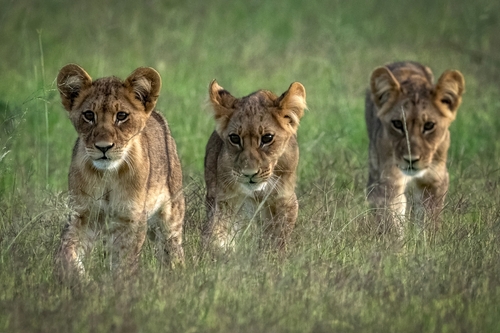
The International Union for Conservation of Nature (IUCN) is the global authority on the status of the natural world and the measures needed for its safeguard. Its “Red List” is an easily and widely understood system that identifies wildlife whose status on the planet is of some concern. A species is listed as “critically endangered” when it is thought to face an extremely high risk of extinction in the near future. This may be measured in a reduction of at least 80% of a species’ population in the preceding 10 years. Here’s a brief narrative on five of the world’s most endangered species of big cat:
Amur Leopard

Photo credit: Jane Rix/Shutterstock.com
The Amur leopard (Panthera pardus orientalis), also known as the Far Eastern leopard, is a subspecies of the leopard. The Amur leopard’s thick fur has enabled it to survive farther north and in colder climates than any other leopard species. The current range of the critically endangered big cat is parts of southeast Russia and northeast China. Additionally, a few unconfirmed sightings in North Korea have also been reported.
There are currently thought to be some 60 – 100 of the species still living in the wild and a captive population of around 200. The rapid decline of the Amur leopard population has come chiefly about from poaching and loss of habitat. The latter came about mainly to deforestation and man-made fires.
Sumatran Tiger

Photo credit: Suriya99/Shutterstock.com
The Sumatran tiger (Panthera tigris sumatrae), also so known as the Sunda tiger, is a subspecies of tiger that is native to the Indonesian island of Sumatra. It’s the smallest of all tiger species, which most experts attribute to the fact that island confined big cat has evolved in isolation. It inhabits various types of terrain, including sub-mountain to mountain forests, lowland forests and peat swamp forests.
The Sumatran tiger has been listed as critically endangered on the IUCN’s Red List since 2008. Best estimates put the current population of the species at fewer than 400 mature individual tigers. They are typically to be found in isolated pockets of protected land. However, threats to the remaining population come from poaching, illegal logging, agricultural encroachment and road building.
Asiatic Cheetah

Photo credit: Marcel Derweduwen/Shutterstock.com
The Asiatic cheetah (Acinonyx jubatus venaticus) is a subspecies of the cheetah found only in Iran. However, during the 20th century, its range also included much of the Near East, the Arabian Peninsula and parts of the Indian subcontinent. The species has been listed as critically endangered on the IUCN Red List since 1996.
The current population of the Asiatic cheetah is thought to be less than 50 individuals. They survive in three subpopulations scattered over 140,000 km2 of Iran’s central plateau. There is also thought to be a small captive population in Pardisan Park, close to Tehran. Hunting of the cheetahs and their prey is thought to be one of the major contributors to the downfall of the species. Other threats to the population include loss of habitat, mining activities and road construction.
South China Tiger

Photo credit: Deer worawut/Shutterstock.com
The South China tiger (Panthera tigris tigris) is the world’s most endangered subspecies of tigers. As its name suggests, the big cat was once endemic to the south of China. In the early 1950s, the South China tiger wild population was reported as being more than 4,000. However, there have been no recorded sightings since the late 1980s, so it is now thought that the South China tiger is extinct in the wild.
The South China tiger has been Red Listed by the IUCN as “critically endangered” since 1996. The demise of the big cat has been largely attributed to a targeted large-scale government ‘anti-pest’ campaign that began in the 1950s. Other major issues included loss, degradation and fragmentation of habitat, as well as low prey density. A recent estimate of the South China tiger’s captive population was put at some 150 individuals. The populace is all within China, where the breeding and management programme is supervised by the Chinese Association of Zoological Gardens.
Iberian Lynx

Photo credit: toney mills/Shutterstock.com
And finally, a success story! During the 19th century, the Iberian lynx (Lynx pardinus) was endemic to much of the Iberian Peninsula and parts of southern France. Steady population decline saw that by the beginning of the 21st century, it could only be found in two small areas of the south of Spain. At that time the total population was estimated to be about 100 individual animals.
The species was brought to the brink of extinction mostly due to the common threats of loss and degradation of habitat, car accidents, hunting, and other forms of persecution. However, since the Spanish government/NGO intervention in the early 2000s, the numbers of the Iberian lynx have steadily grown. In 2015, the IUCN downgraded the lynx’s status on its Red List from “critically endangered” to “endangered” when numbers topped 400. Today in 2023, the Iberian lynx population is thought to exceed 1600.
Header image credit: Richard Juilliart/Shutterstock.com





